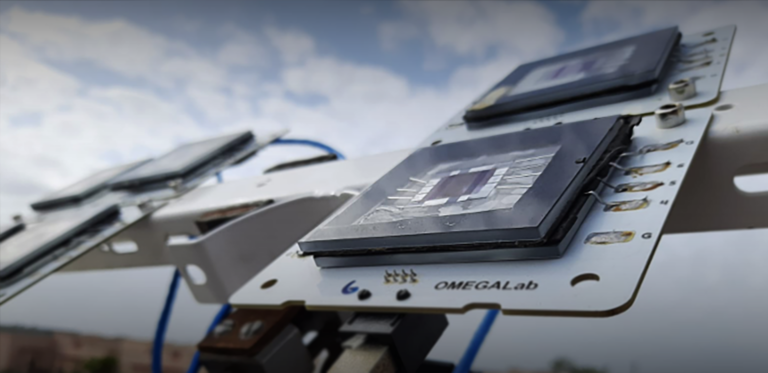Material Science and Engineering
High-temperature electrical memories for brain-inspired computation
Brain-like computing could be possible using electrical memory devices made from an unexpected material.

Van der Waals crystals comprise weakly bound atomic layers that can be pulled apart or exfoliated to create two-dimensional materials. KAUST researchers have now shown that these materials can be used in high-performance, energy-efficient and high-capacity memory devices known as memristors.[1]
The signature property of a memristor is that its electrical resistance depends on the amount of current running through it and, importantly, that this resistance remains even after the current stops. So memristors remember how much current was previously flowing through them, and this feature gives them their name: a portmanteau of memory and resistor.
This behavior is similar to the neurons and synapses of the brain, and so memristors are an exciting building block for so-called neuromorphic computers.
Doctoral student Yinchang Ma and other group members in Xixiang Zhang’s team from KAUST — working with colleagues from the University of Melbourne, Australia, Zhejiang University and Sichuan University in China, and the University of Maryland, College Park, in the United States — have created a high-performance and robust memristor from a metal thiophosphate CuCrP2S6.
Other materials in this family, notably CuInP2S6, have previously been studied for memristor applications because they are ferroelectric. This means their atomic structure can be permanently electrically polarized (the average negative electrical charge is spatially displaced from the average positive charge) by applying an electric field. The problem is that CuInP2S6 loses this ferroelectric behavior at temperatures above 42 degrees Celsius. This affects the materials’ performance, which deteriorates and becomes unstable.
Ma and the team tackled the problem in a very different way. “Our approach to memristor technology exploits the unique properties not of ferroelectric materials, but of antiferroelectric materials — a direction in memristor research that has been overlooked until now,” explains Ma. The team has shown that antiferroelectric CuCrP2S6 can be turned into a ferroelectric by applying an electric field.
With this knowledge, the researchers created a device demonstrating memristor behavior, including biological synaptic learning, impressive resistive switching capabilities with a high ON/OFF ratio, high durability and thermal stability. Their device worked across up to 20,000 ON/OFF cycles and at temperatures as high as 120 degrees Celsius.
“Our research highlights the importance of looking beyond the conventional material choices and exploring novel mechanisms to uncover hidden potentials in materials,” says Ma. “Next, we aim to deepen our understanding of the ferroelectric transition. Potentially, we maybe even discover others to explore for their implications for memristor functionality.”
Reference
- Ma, Y., Yan, Y., Luo, L., Pazos, S., Zhang, C., Lv, X., Chen, M., Liu, C., Wang, Y., Chen, A., Li, Y., Zheng, D., Lin, R., Algaidi, H., Sun, M., Liu , J.Z., Tu, S., Alshareef, H.N., Gong, C., Lanza, M., Xue, F. & Zhang, X. High-performance van der Waals antiferroelectric CuCrP2S6-based memristors. Nature Communications 14, 7891 (2023).| article
You might also like

Material Science and Engineering
Electron movie guides design of layered perovskite materials

Material Science and Engineering
Remote region sensor for essential vitamin deficiency

Material Science and Engineering
Low-power hydrogen sensor detects leaks in an instant

Material Science and Engineering
Illuminating pathways to long-lived organic solar cells

Chemistry
Beating the dark current for safer X-ray imaging

Chemical Engineering
Net benefits for advanced materials design

Material Science and Engineering
Atom-thin insulator grown into perfect films

Material Science and Engineering




